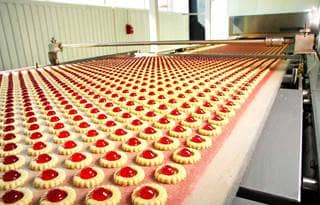Food processors and distributors are being forced to make fast decisions to meet rapidly fluctuating demand in a “new normal” that’s anything but predictable. Plant operations and supply chains have been severely impacted, and this may continue for some time. Businesses must think even more strategically and proactively about how to best manage their inventory and supply chain.
Prior to the pandemic, food and beverage companies tended to run inventories tight, relying on just-in-time and lean supply chain management strategies to safely keep less inventory on hand. It’s time to rethink that approach — at least in the short term. What if one of your key suppliers experiences a spike of infections and has to shut down suddenly? Or one of your own facilities has to power down unexpectedly? Are you prepared to keep things running in the event something like this occurs?
Consider the following actions.
1. Identify mission-critical items — all of them.
Carrying a greater inventory of key products than before may be necessary to be sure you can maintain operations, address staff and food safety concerns, and meet the needs of your customers going forward.
Have you developed a detailed list of mission-critical items and updated the standard inventory levels that should be maintained for each item? Your list should include inventory items that go directly into your products, including processing aids, but don’t forget:
- Cleaning and sanitation products
- Personal protective equipment, such as masks, gloves, and gowns
- Key replacement parts and maintenance products, such as food-grade lubricants for critical plant equipment
- Inventory items you may only use in small quantities but are crucial to your operations
2. Evaluate existing and new suppliers.
Consider each of your vendors and evaluate their ability to react quickly and maintain supply continuity. For example, are they in a potentially problematic region or troubled industry? Do your homework and conduct a risk analysis.
Then, think about contingency plans. Can you source from additional regions? Can you get growers to grow more for you? Are there new suppliers who can supplement your supply chain — even if it’s temporary? Be creative in your thought process — you can’t depend on the same supply chain you did a few months ago. This might mean you pay a premium for a product, which impacts your cost structure and margins, but that might be a small price to pay when compared with the risk of losing business.
3. Assess safety stock levels.
Take a careful look at raising safety stock levels both of raw materials and finished products to ensure you can meet customer demand if you have a plant outage. Plan for demand to fluctuate and for stock to need rebalancing among your facilities as circumstances improve or decline going forward.
4. Leverage technology.
What technologies can you employ to improve productivity and extend shelf life so you can hold on to your inventory longer? (Think different sterilization processes or storage technologies.) These may require an investment you may not have been planning, but if technology improves your resilience in the face of supply chain disruptions and plant shutdowns, their ROI might look different now.
Consider maintenance technologies, such as predictive maintenance systems and automation to support paperless transactions for managing inventory. For instance, can you move your pick sheets to handheld devices like tablets?
5. Consider new consignment arrangements.
Approach your key customers and vendors — are customers able to hold inventory for you, or are vendors willing to put supplies in your plant on consignment? This could be a win-win, so each party has a protective buffer in the event of a disruption.
6. Revisit how you forecast and plan inventory.
How you model inventory may need to change. You may need to update inputs to your MRP (materials requirements planning) and MPS (master production schedule) and modify the data that feeds your aggregate production plan to ensure you have enough product to get through the year.
7. Model financial impacts and update KPIs.
Understand the financial rippling effects of the inventory management changes you make. Margins may decrease as you implement protective measures and backup plans, which impacts your balance sheet. Adjust your cost models and cash forecasting models to reflect the new reality. Revisit your KPIs (key performance indicators). For example, your inventory-to-sales ratio may have to increase, and your inventory-turn metrics may need adjusting to reflect longer turns.
8. Model multiple scenarios.
Food processors and distributors can no longer rely on past data to predict the future. Think about last year’s data — it likely won’t be useful since the industry saw panic-buying, sudden plant closures, and no food service business to speak of. Looking ahead, you’ll want to plan and forecast multiple scenarios — optimistic, middle-of-the-road, and crisis. Businesses that account for a broader range of possibilities will be better positioned.
In conclusion
As you consider the steps above, talk to your customers and suppliers. What innovative, mutually beneficial solutions can you come up with?
No one wants their business disrupted. Take steps now to lessen future supply chain and inventory management challenges. Doing so will help you manage through this crisis — and future crises — with fewer surprises and less risk.
As always, if you have questions, feel free to reach out.





